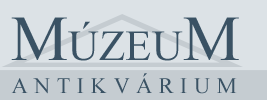categories
- Traffic and Vehicles Catalogue
- socreal.catalog
- Advertisement Catalogue
- Photo Catalogue
- Chinese and Japanese Catalogue
- New Holy Card Catalogue II.
- 12 interesting old books
 Books
Books
 Bibliophil
Bibliophil
 Antiques
Antiques
 Engraving
Engraving
 Maps
Maps
 Photos
Photos
 Antique Papers, Small Prints
Antique Papers, Small Prints
 Posters
Posters
- Circus
- Modern Graphics
- Socialist Realism
- NER Propaganda
- Others
cart
Cart is empty
You've not logged in
Lindholm, D. - Nicolle, D. : The Scandinavian Baltic Crusades 110-0500
- description
- additional information
Illustrated by A.McBride
Series: Men-at-Arms
Wielding their swords in the name of their faith, the crusaders originally set out to reclaim Jerusalem and its surrounding territory in the Middle East. Increasingly, however, Eastern Europe and the last remaining bastions of pagan Europe became the targets of their religious zeal.
The era officially began in 1147, when the Saxons, Danes, and Poles, responding to Pope Eugene III's call, initiated a crusade against the Wends of the Southern Baltic. This was followed by crusades against the Livonians, Estonians, Finns, Prussians, and Lithuanians. By the 13th century much of the responsibility for sustaining these crusades fell to the Teutonic Knights, a military order formed in the Holy Land in 1190. They were aided by the constant support of the Roman pontiff and by a steady flow of mercenaries from throughout Christendom.
The subsequent Scandinavian campaigns laid the foundations of modern Baltic society by destroying pagan rural farming settlements, and establishing fortified Christian towns and major castles. As with the majority of crusades, the prospective acquisition of land and power was the one of the key driving forces behind these bloody military expeditions.
This book reveals the colorful history of these Crusades when the soldiers of the Pope fought their way across Eastern Europe and inexorably changed the future of the continent.
Series: Men-at-Arms
Wielding their swords in the name of their faith, the crusaders originally set out to reclaim Jerusalem and its surrounding territory in the Middle East. Increasingly, however, Eastern Europe and the last remaining bastions of pagan Europe became the targets of their religious zeal.
The era officially began in 1147, when the Saxons, Danes, and Poles, responding to Pope Eugene III's call, initiated a crusade against the Wends of the Southern Baltic. This was followed by crusades against the Livonians, Estonians, Finns, Prussians, and Lithuanians. By the 13th century much of the responsibility for sustaining these crusades fell to the Teutonic Knights, a military order formed in the Holy Land in 1190. They were aided by the constant support of the Roman pontiff and by a steady flow of mercenaries from throughout Christendom.
The subsequent Scandinavian campaigns laid the foundations of modern Baltic society by destroying pagan rural farming settlements, and establishing fortified Christian towns and major castles. As with the majority of crusades, the prospective acquisition of land and power was the one of the key driving forces behind these bloody military expeditions.
This book reveals the colorful history of these Crusades when the soldiers of the Pope fought their way across Eastern Europe and inexorably changed the future of the continent.
| condition: |      |
| category: | Books > Foreign Language Books > Books in English > |
| category: | Books > Military, Ordenskunde > |
| category: | Books > History > Universal history > |
| publisher: | Osprey Publishing, 2007 |
| item number / ISBN: | 9781841769882 |
| binding: | paperback |
| pages: | 48 |
| language: | English |









 Telefon:
Telefon: E-mail:
E-mail:







